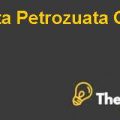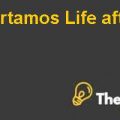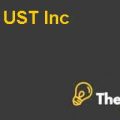7-Eleven Japan Case Study Solution
Introduction
Convenience stores in Japan were reportedly around 57,000 in the year 2020. Among these stores, 7 Elkeven has been the market leader having around 21, 167 stores operating nationwide. The convenience stores have adopted a franchise model nationwide operating in different regions and providing training to their employees according to the chain’s business execution.
The head office provides the necessary training and supplies products to the retailers. 7 eleven has established its name in the convenience store industry worldwide having various franchises and a long history of excellent financial management. The firm has topped the list of per average sales per year and works in close proximity to the Japanese lifestyle.
Problem Statement
7 Eleven’s information and logistics system is well maintained and aids in its execution. The firm has maintained its hourly track of items and refreshes its collection of products all day to match customer demands. The firm was looking for different and new ways to tackle the imposing lawn in the convenience store industry.
Characteristics of Convenience Store
Convenience Store
A small retail shop that contains a limited amount of products for daily use and covers a small geographical area. Convenience stores utilize the model of the franchise for business execution. The training, branding rights, products, marketing, and management are provided by the head office for these convenience stores. These stores carry 3000 SKUs in their facility in major four niches i.e. confectionary, instant noodles, soft drinks, and sealed vacuum foods. These stores are also moving towards manufacturing their own private labels. 7 Eleven has been the biggest retailer in the category in Japan.
Characteristics
Convenience stores are operating worldwide each having different characteristics but some features are seen common in every store which are stated below.
- The convenience stores are located near residential areas.
- These are small outlets located in several regions.
- These are open for long hours and carry a relatively low quantity of high-revenue products.
- They have rendered high prices for convenient products.
- They have added on food services, but customers still prefer the fill-in products like those of daily use bread, eggs, etc.
- These stores follow the franchise business model for execution.
- These stores carry major four niches i.e. confectionary, instant noodles, soft drinks, and vacuum-sealed foods.
Difference between the Convenience Store and Supermarket
Convenience stores are one-stop shops where consumers stop by to purchase a few products for everyday use while supermarkets are big shops for providing all the necessary goods and services. Supermarkets have a huge variety of everyday products while convenience shops have products for emergency use. The one with big purpose has a huge team and management than the other. The store design and product mix are also variable. The supermarkets also consist of cosmetics, clothing, appliances, etc.
The average store size for a convenience store is around 2400 ft while for supermarkets, it is around 45,000ft. The convenience shops are open for the entire day while the supermarkets are time-restricted more often and open for around 12 hours a day. They also have large staffing and so more number of checkout points which lacks in grocery stores. For details see.
7-Eleven is more profitable than other convenient stores
7 eleven is more profitable than its relative counterparts convenience stores. The reason is the strategic operational measures the firm has adopted which have led the firm to top the list of convenience stores. These can be analyzed better with frameworks like 3 Cs................
This is just a sample partial case solution. Please place the order on the website to order your own originally done case solution.













